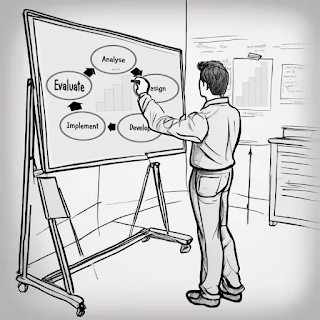Picture yourself in the midst of designing a critical training program for a valued client. Having completed the initial Analysis stage of the ADDIE process, you're equipped with a clear understanding of the objectives: enhanced customer satisfaction, improving product knowledge, and boosting sales performance. Yet, as you sit down to design the training materials, you find yourself grappling with a lack of inspiration. Inspiration, however, is a fusion of various elements, including knowledge and experience. Fortunately, we can leverage our existing understanding as a springboard, intertwining it with new insights to ignite innovative ideas. Enter Gagné's Nine Events of Instruction—a framework revered in instructional design. By anchoring our design process in these nine events, we can systematically craft training programs that captivate, educate, and endure in learners' memories. Here's an exploration of the Nine Events and their application within the context of c...






